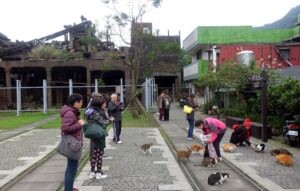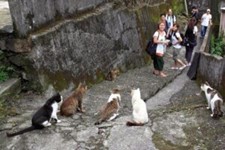Sometimes small villages struggle, due to the scarce resources the local trades can offer. This same destiny could have affected a very tiny town, if it wasn’t for a pack of little lovely cats.
The VILLAGE saved by CATS: a true story
# Houtong: rise and decline

We are in the small village of Houtong, one hour by train from the capital Taipei in Taiwan. During the early ‘900, Houtong looked very different as it does today. The town represented one of main carbon extraction sites in the country, granting to villagers a sustained demographic growth and enviable revenues. In 1990, though, the mine was abandoned. The core of the extraction moved to other sites, looking for better opportunities. Only one hundred locals decided to remain in their home town, struggling to keep up and helping each other.
# Cats take humans’ place
The turning point was in 2010. A popular photographer and cat lover decided to document, through his blog, the rising feline colony taking base in Houtong. Thanks to the help of the locals and some volunteers hundreds of cats can now roam undisturbed through the streets, with plenty of food and water. Houtong cats became a highlight for tourists, helping local economy by attracting foreigners.
# A bridge, a park, a museum and road signs for cats

The salvation process, however, did not happen by accident. Locals exploited this phenomenon to their advantage, building attractions for cats and tourists in several areas of the village. It is possible today to visit a bridge for cats only, a feline museum, a themed park. There are even road signs intended just for cats! These little improvements helped to transform an almost abandoned hamlet into a destination for million of visitors every year.
As in every good story, unfortunately, there is some negative consequences. During the last years, more and more cat owners visited Houtong to abandon their trustworthy companions when they did not want to take care of them anymore. In addition, the mass tourism increased the food flow for local wildlife, leading to serious overweight problems for the pack. Local authorities are trying to sensibilize foreigners to be respectful of the fauna, providing them with useful tips and guidelines. And, after all, this remains a good story that strengthens the bond between humans and our animal companions.
MATTIA LANDRO











